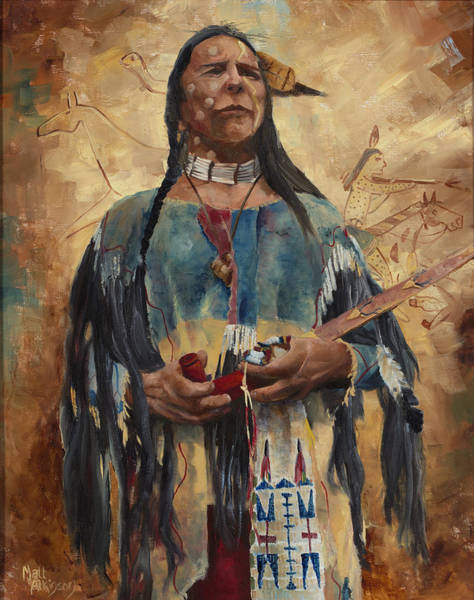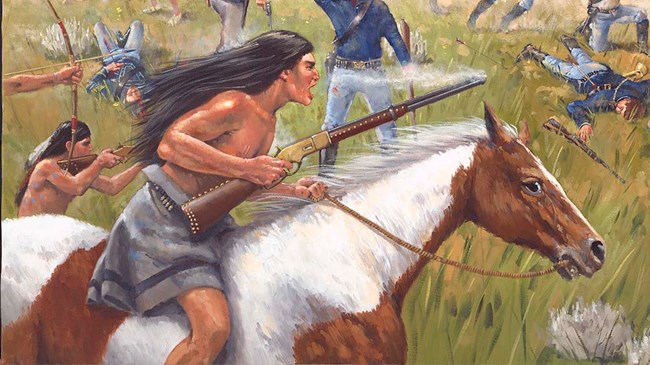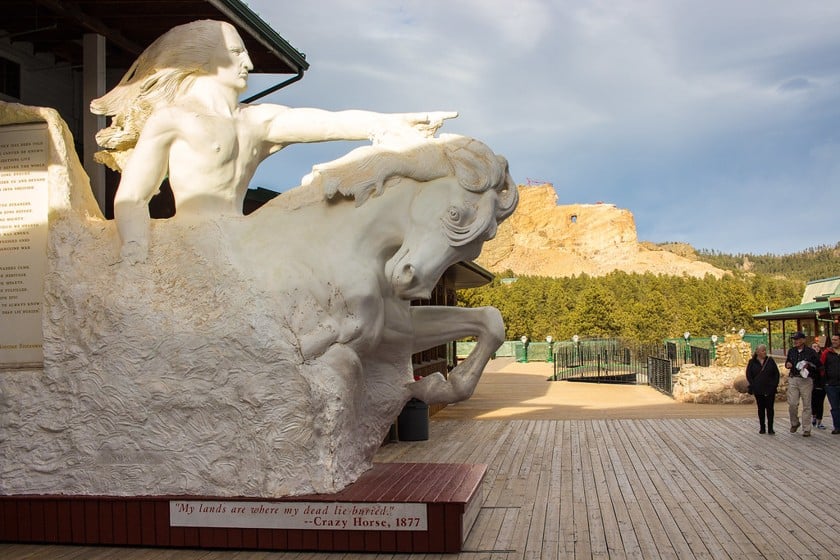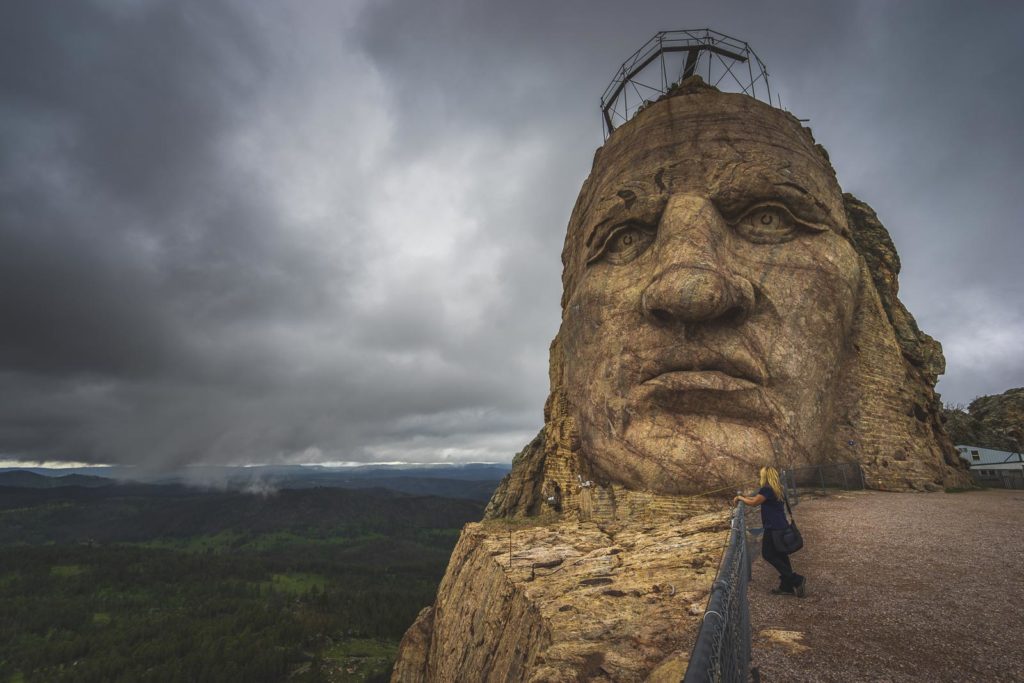Nestled within the picturesque landscapes of South Dakota’s Black Hills, the imposing Crazy Horse monument stands as an eternal testament to a legendary figure—Chief Crazy Horse. Who was Crazy Horse, and what is the enduring significance of the Crazy Horse monument today? This extensive exploration delves into the life and legacy of Chief Crazy Horse, unraveling the mysteries of his name, chronicling his pivotal battles, examining the circumstances of his death, and shedding light on the absence of pictures of Crazy Horse. Join us on this historical odyssey, uncovering the story of a revered Lakota leader, and discover the beauty of South Dakota while staying at the Black Hawk Creek RV Park & Cabins—a perfect base camp for your adventure.

Who was Crazy Horse and His Legacy?
Chief, known by his Lakota name ‘Thasunke Witko,’ emerges from the annals of Native American history as an iconic leader born around 1840 in what is now South Dakota. A member of the Oglala Lakota Sioux tribe, Crazy Horse’s legacy is synonymous with resistance, courage, and an unwavering commitment to preserving his people’s culture and lands.
The “Chief” early years were marked by exceptional prowess as a warrior and visionary leader. His legacy is deeply intertwined with his pivotal role in crucial battles, notably the Battle of Little Bighorn in 1876. Alongside leaders like Sitting Bull and Gall, Thasunke Witko the “Chief” orchestrated a triumphant stand against General George Custer’s 7th Cavalry, etching his name in history as a defender of his people.
Beyond his military achievements, The Chief´s legacy extends to his staunch commitment to preserving Lakota culture. Resisting assimilation into white society, he fiercely safeguarded the sacred Black Hills—a region of profound cultural and spiritual significance.
He wasn’t always called Crazy Horse
In the realm of Native American lore, Chief Crazy Horse stands as an iconic figure, leaving us to ponder who was Crazy Horse and who is Thasunke Witko the “Chief” in the narrative of history. This exploration delves into the life of Chief Crazy Horse, contemplating the enduring presence of the Thasunke Witko the “Chief” monument today, and the elusive allure of pictures of the “Chief”.
The genesis of Chief Crazy Horse’s name, originally ‘Thasunke Witko,’ unveils a narrative rich in cultural significance. “Crazy Horse” is not a testament to madness but a reflection of an unorthodox and unpredictable military prowess. The transformation of his name is a testament to his strategic brilliance on the battlefield, a captivating detail that adds layers to the legacy of this revered chief.
This journey through history navigates the pivotal battles that defined Thasunke Witko the “Chief” legacy and the consequences that followed his surrender. Meanwhile, we confront the intriguing absence of authenticated pictures of Thasunke Witko the “Chief”, adding an air of mystery to the persona of this indomitable leader. Join us as we unravel the multifaceted story of Chief Crazy Horse, a symbol of strength and resilience in Native American history.
His Most Important Battles
Chief Crazy Horse, a towering figure in Native American history, prompts the questions of who was Crazy Horse and who is Crazy Horse in the tapestry of time. Delving into the annals of his life unveils a saga marked by resilience, leadership, and a series of pivotal battles that echo through history.
Thasunke Witko the Chief’s most important battles were not mere clashes but defining moments that etched his legacy. The Battle of Little Bighorn in 1876 stands as a testament to his strategic brilliance. Leading Lakota and Cheyenne warriors, the “Chief” played a crucial role in the defeat of General Custer’s 7th Cavalry, securing his place as a symbol of Native American resistance.
The Fetterman Fight in 1866 further showcased Crazy Horse’s tactical prowess. In this engagement, he orchestrated an ambush, defeating a U.S. Army detachment led by Captain William Fetterman. These battles weren’t just military victories; they were acts of defiance against the encroachment on Lakota territory.
As we explore the significance of the Chief in the context of his most crucial battles, we unravel the layers of a leader whose resilience and strategic acumen left an indelible mark on the pages of history.
His Death and Consequences
The circumstances surrounding Thasunke Witko the “Chief” death remain veiled in mystery and controversy. In September 1877, just a year after the Battle of Little Bighorn, Crazy Horse surrendered to U.S. authorities at Fort Robinson, Nebraska. The reasons for his surrender are still debated among historians. Some suggest he sought to ensure the safety of his people, while others speculate that he was led into a trap.
Tragically, the “Chief” surrender did not lead to a peaceful resolution. On the night of September 5, 1877, a confrontation at Fort Robinson resulted in Thasunke Witko the “Chief” being mortally wounded. He passed away the following day, marking the end of a charismatic and visionary leader. His death had profound consequences, symbolizing a decline in Native American resistance against U.S. expansion.
Pictures of Crazy Horse
One intriguing aspect of Thasunke Witko the “Chief” legacy is the absence of authenticated photographs. Despite the photographic technology of the era, no pictures of the Chief. This absence adds to the mystique surrounding the chief, emphasizing his elusive and enigmatic nature. The lack of visual documentation has only heightened the reverence and fascination surrounding Thasunke Witko the “Chief” image.

Crazy Horse Memorial
In the vast expanse of South Dakota’s Black Hills lies the profound testament to Chief’s enduring legacy—the Crazy Horse Memorial. Pondering who was Thasunke Witko the “Chief” and who is the “Chief” today leads us to this monumental sculpture, an ongoing tribute to a revered Lakota leader.
Situated in the majestic Black Hills, the Crazy Horse Memorial is not merely a sculpture; it is a symbolic narrative etched into the landscape. Initiated in 1948, this colossal endeavor aims to depict Chief on horseback, gazing steadfastly towards the horizon. The monument, a brainchild of sculptor Korczak Ziolkowski, is not just a representation; it’s a celebration of Native American resilience and a reminder of the struggles faced by indigenous communities.
The relevance of the Crazy Horse Memorial extends beyond its artistic magnificence. It serves as an educational center, offering insights into Lakota culture, history, and the ongoing challenges faced by Native American nations. As visitors stand in awe of the monumental tribute, they become part of a living history—a history that questions the past celebrates the present, and looks forward to a future where the legacy of Thasunke Witko the “Chief” lives on.

Looking for a place to stay near the Crazy Horse memorial?
For an unparalleled South Dakota adventure, consider Black Hawk Creek RV Park & Cabins as your base. Nestled in the heart of the state, our year-round park offers the perfect starting point for exploring iconic attractions, including The Chief Memorial. Immerse yourself in the beauty and excitement of South Dakota, creating unforgettable memories at Black Hawk Creek RV Park & Cabins. Book your stay today and embark on a journey where history, culture, and natural beauty converge. Let the adventure begin!

